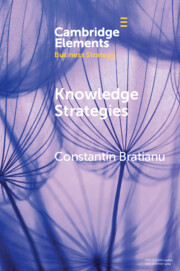Element contents
Knowledge Strategies
Published online by Cambridge University Press: 21 July 2022
Summary
Keywords
- Type
- Element
- Information
- Series: Elements in Business StrategyOnline ISBN: 9781108864237Publisher: Cambridge University PressPrint publication: 11 August 2022
References
- 32
- Cited by

